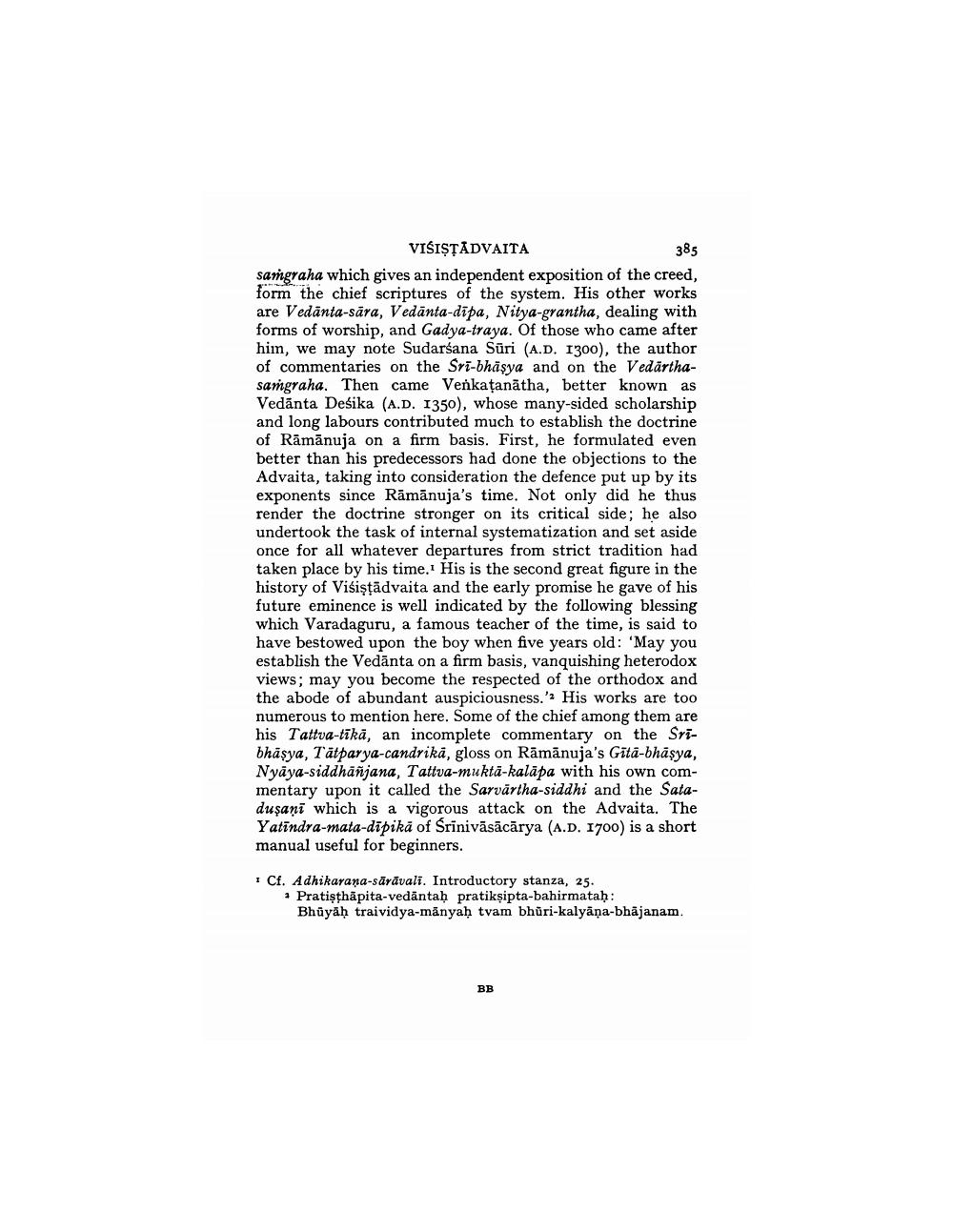________________
VISISTADVAITA
385
samgraha which gives an independent exposition of the creed, form the chief scriptures of the system. His other works are Vedanta-sära, Vedanta-dipa, Nitya-grantha, dealing with forms of worship, and Gadya-traya. Of those who came after him, we may note Sudarśana Sūri (A.D. 1300), the author of commentaries on the Sri-bhäşya and on the Vedarthasamgraha. Then came Venkaṭanatha, better known as Vedanta Deśika (A.D. 1350), whose many-sided scholarship and long labours contributed much to establish the doctrine of Ramanuja on a firm basis. First, he formulated even better than his predecessors had done the objections to the Advaita, taking into consideration the defence put up by its exponents since Rāmānuja's time. Not only did he thus render the doctrine stronger on its critical side; he also undertook the task of internal systematization and set aside once for all whatever departures from strict tradition had taken place by his time. His is the second great figure in the history of Visiṣṭādvaita and the early promise he gave of his future eminence is well indicated by the following blessing which Varadaguru, a famous teacher of the time, is said to have bestowed upon the boy when five years old: 'May you establish the Vedanta on a firm basis, vanquishing heterodox views; may you become the respected of the orthodox and the abode of abundant auspiciousness.' His works are too numerous to mention here. Some of the chief among them are his Tattva-tikā, an incomplete commentary on the Sribhasya, Tatparya-candrika, gloss on Rāmānuja's Gālā-bhāsya, Nyaya-siddhañjana, Tattva-mukta-kalapa with his own commentary upon it called the Sarvärtha-siddhi and the Sataduşani which is a vigorous attack on the Advaita. The Yatindra-mata-dipika of Srinivāsācārya (A.D. 1700) is a short manual useful for beginners.
Cf. Adhikarana-säravali. Introductory stanza, 25.
Pratiṣṭhāpita-vedantaḥ pratikṣipta-bahirmataḥ:
Bhuyaḥ traividya-manyaḥ tvam bhuri-kalyāṇa-bhājanam.
BB




